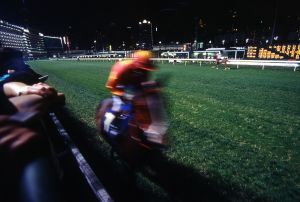Different Types of Horse Racing
Horse racing in North America, particularly the Unite d States began with the opening of the Newmarket Race Course on Long Island in the year 1665. Organized horse racing began with the opening of the American Stud Book in 1868. By 1890, there were more than 300 race tracks in the United States prompting the formation of the American Jockey Club in 1894. Horse betting saw a decline in the early 20th century due to the negative outlook on gambling in America. However, pari-mutuel betting revived the horse racing industry when it was introduced in 1908, and ever since horse racing has steadily gained popularity.
d States began with the opening of the Newmarket Race Course on Long Island in the year 1665. Organized horse racing began with the opening of the American Stud Book in 1868. By 1890, there were more than 300 race tracks in the United States prompting the formation of the American Jockey Club in 1894. Horse betting saw a decline in the early 20th century due to the negative outlook on gambling in America. However, pari-mutuel betting revived the horse racing industry when it was introduced in 1908, and ever since horse racing has steadily gained popularity.
Thoroughbred Racing
Thoroughbred flat racing is the most common type of horse racing. Flat racing is further classified into handicap races and condition races. The more prestigious of the two is condition races which give away the largest purses. Handicap races are those wherein the horse is assigned a certain amount of weight to carry depending on its ability.
Thoroughbred races are run either on a dirt surface, turf surface or a synthetic surface. These races can be of varying distances, between five and 12 furlongs. For the uninitiated, one furlong is 220 yards or one eighth of a mile. Thoroughbred racing usually takes place on an oval shaped track. A thoroughbred race tests the speed and the stamina of the participating horses. The most prestigious of Thoroughbred races in the United States is the American Triple Crown. It is a series of three horse racing events, namely the Kentucky Derby, The Preakness Stakes and Belmont Stakes. A horse is said to have won the Triple Crown if it wins all three races in one season.
Harness Racing
Harness racing is another form of horse racing that was popular in ancient times but vanished with the collapse of the Roman Empire. However, in the late 18th century, rural America found a popular pastime in racing trotting horses on local country roads. Harness racing was back with a bang by 1825 when harness racing tracks were constructed and it became a popular sport at country fairs in the United States.
In harness racing, the horses pull sulkies or two-wheeled carts and race in a specific gait, either the trot or pace. The horses are usually Standardbred, that is, they are bred specially
for racing under the harness. In North America, all harness racing distance is a standard one mile. All Standardbreds have their lineage in the English Thoroughbred Messenger brought to the US in 1788. Breeding was to Thoroughbred mares as well as mixed breed mares and the offspring was a new breed of horses that were named “Standardbred”. Due to their anatomy, endurance and temperament, this breed of horses was uniquely suited to harness racing.
The late nineteenth century saw the popularity of harness racing reach its peak, but thereafter in the 1900s, it declined in popularity perhaps due to the advent of the automobile. In 1940, harness racing was re-introduced to the American public. The races were carried out under lights and pari-mutual betting was introduced. Today, harness racing is even more popular than Thoroughbred racing. In fact, the number of tracks and the number of races exceed even those of Thoroughbred racing. Harness racing is also popular in Canada, Australia, New Zealand and some European countries.
Steeplechase Races
Steeplechase races are held for a distance of 2 to 4 miles or 3.2 to 6.4 km over a racetrack that is full of obstacles. Stone walls, brush fences, timber rails and water jumps are some of the hurdles that the race horse must overcome to reach the “steeples”. Steeplechase races were not so organized earlier on. In 1752, the first steeplechase race was held in Cork, Ireland with church steeples marking the finish line. The race courses back then were rough terrain and the horse and rider had to deal with the obstacles as best as possible. The only aim of the race was to reach the finish line first. Organized steeplechase racing as we see it today began only during the 1830s.
The most prominent steeplechase race in the United States is the Grand National Steeplechase held at Belmont Park.
Hurdling
Hurdling is similar to steeplechase race and is used to train horses to perform at tougher steeplechases. The hurdles are lower by one or two feet and the distance is usually less than two miles. Horses used in steeplechases are usually Thoroughbreds chosen for their large size, calm temperament and of course, endurance.
Point-to-point Races
As the term states, point-to-point races are run straight across the country, i.e. from one point to another. In the present day however, these races, like all others are held on oval tracks in a fenced areas, but generally on farmland.
Now that you know the various types of horse races, go ahead and pick out the type of race you prefer and try out the betting odds.



